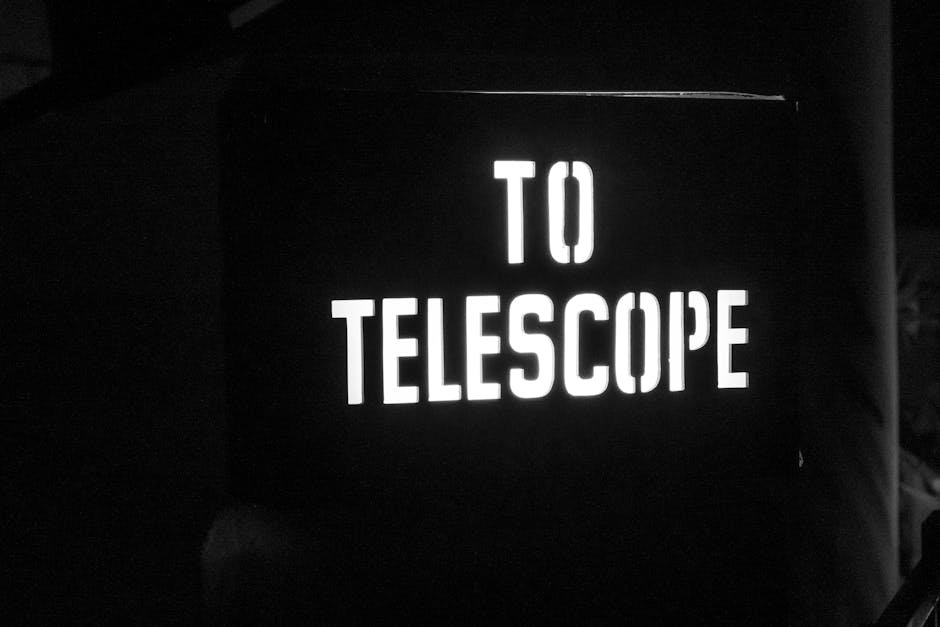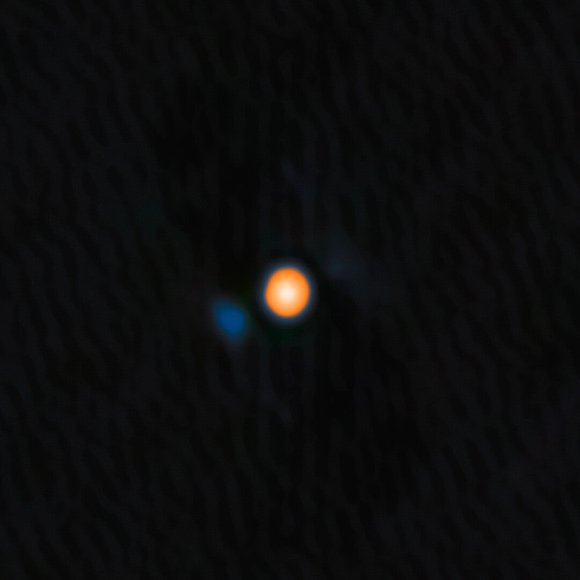Using the speckle imager ‘Alopeke on the Gemini North telescope, one half of NSF’s International Gemini Observatory, astronomers have captured direct images of Betelgeuse — the second-closest red supergiant to Earth — and its companion star.
Betelgeuse (right) and its stellar companion (left). Image credit: International Gemini Observatory / NOIRLab / NSF / AURA / M. Zamani, NSF’s NOIRLab.
Betelgeuse is an 8-million-year-old red supergiant located approximately 724 light-years away in the shoulder of the constellation Orion.
With a radius around 1,400 times larger than the Sun’s, it is one of the biggest stars known.
Also known as Alpha Orionis or Alpha Ori, Betelgeuse is also one of the most luminous stars, emitting more light than 100,000 Suns.
The star is nearing the end of its life span, and when it explodes, the event will be bright enough to see during the day for weeks.
Betelgeuse has a main period of variability of around 400 days and a more extended secondary period of around six years.
In 2019 and 2020, there was a steep decrease in Betelgeuse’s brightness — an event referred to as the ‘Great Dimming.’
The event led some to believe that a supernova explosion was quickly approaching, but astronomers were able to determine the dimming was actually caused by a large cloud of dust ejected from Betelgeuse.
The Great Dimming mystery was solved, but the event sparked a renewed interest in studying the red supergiant, which brought about new analyses of archival data on the star.
One analysis led scientists to propose that the cause of Betelgeuse’s six-year variability is the presence of a companion star.
But when the NASA/ESA Hubble Space Telescope and NASA’s Chandra X-ray Observatory searched for this companion, no detections were made.
To search for Betelgeuse’s stellar companion, named Alpha Ori B or the Betelbuddy, Dr. Steve Howell from NASA’s Ames Research Center and his colleagues used the speckle imager ‘Alopeke on the Gemini North telescope.
“Speckle imaging is an astronomical imaging technique that uses very short exposure times to freeze out the distortions in images caused by Earth’s atmosphere,” they said.
“This technique enables high resolution, which, when combined with the light collecting power of Gemini North’s 8.1-m mirror, allowed for Betelgeuse’s faint companion to be directly detected.”
The analysis of the companion star’s light allowed the astronomers to determine the companion star’s characteristics.
They found that it is six magnitudes fainter than Betelgeuse in the optical wavelength range, it has an estimated mass of around 1.5 solar masses, and it appears to be an A- or B-type pre-main-sequence star — a hot, young, blue-white star that has not yet initiated hydrogen burning in its core.
The companion is at a relatively close distance away from the surface of Betelgeuse — about four times the distance between the Earth and the Sun.
This discovery is the first time a close-in stellar companion has been detected orbiting a supergiant star.
Even more impressive — the companion orbits well within Betelgeuse’s outer extended atmosphere, proving the incredible resolving abilities of ‘Alopeke.
“The speckle capabilities provided by the International Gemini Observatory continue to be a spectacular tool, open to all astronomers for a wide range of astronomy applications,” said Dr. Martin Still, NSF program director for the International Gemini Observatory.
“Delivering the solution to the Betelgeuse problem that has stood for hundreds of years will stand as an evocative highlight achievement.”
The findings appear today in the Astrophysical Journal Letters.
_____
Steve Howell et al. 2025. Probable Direct Imaging Discovery of the Stellar Companion to Betelgeuse. ApJL, in press; doi: 10.3847/2041-8213/adeaaf



